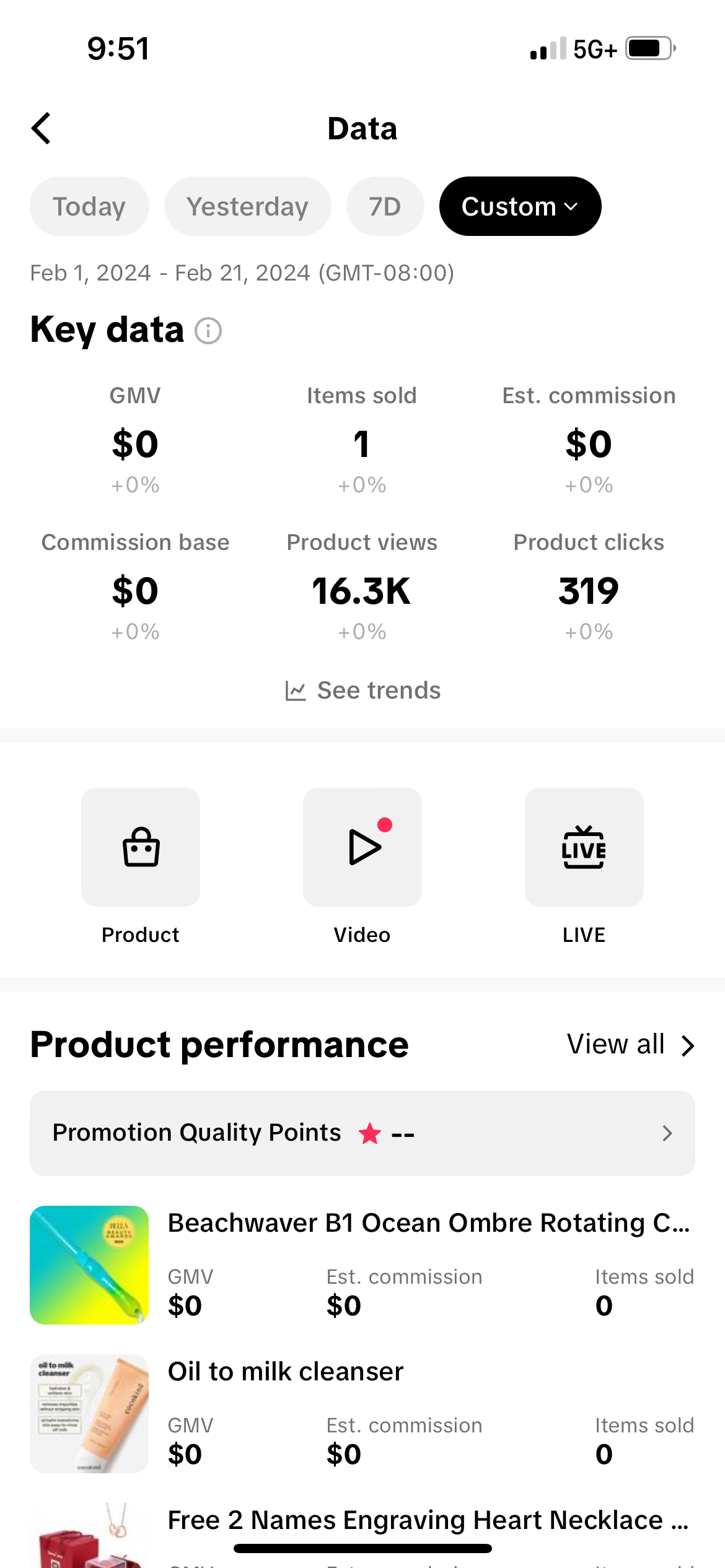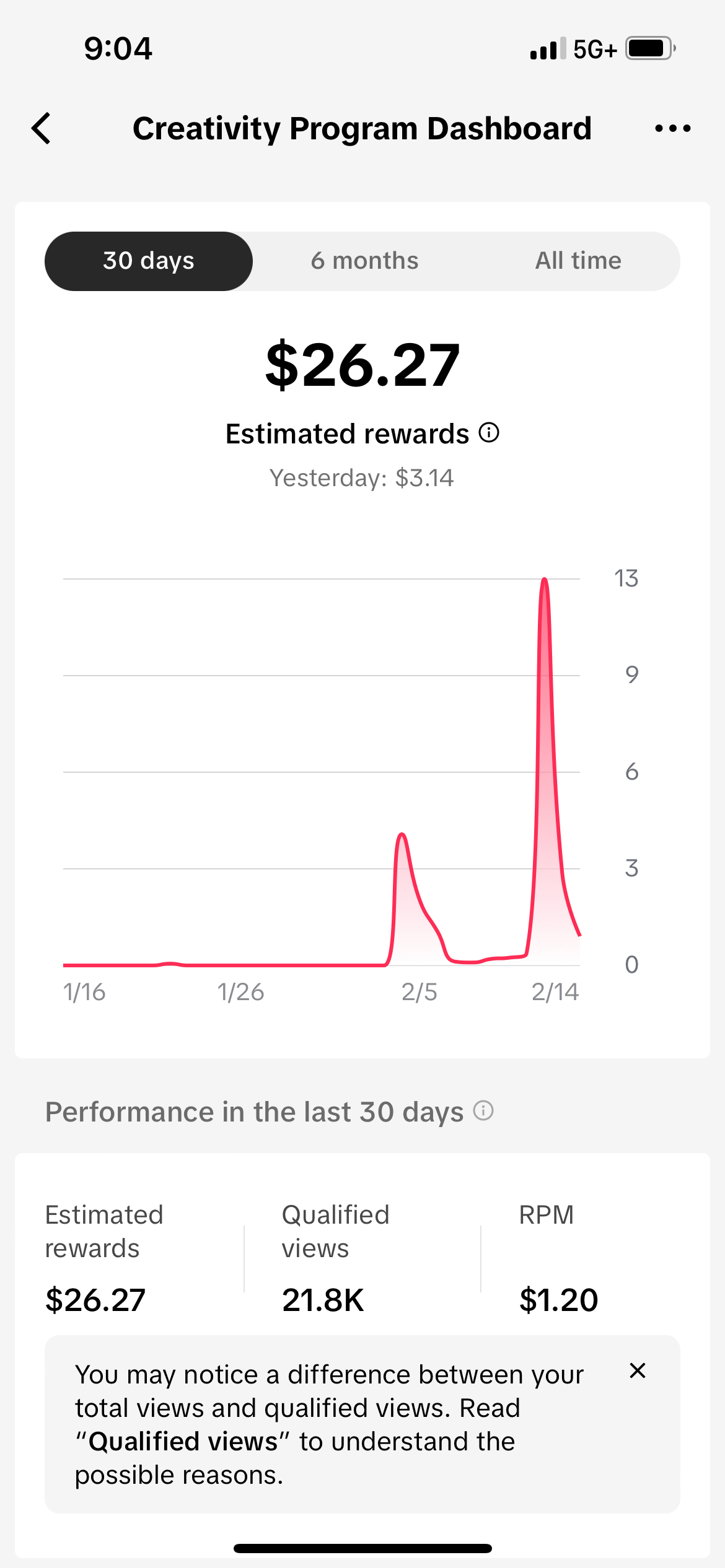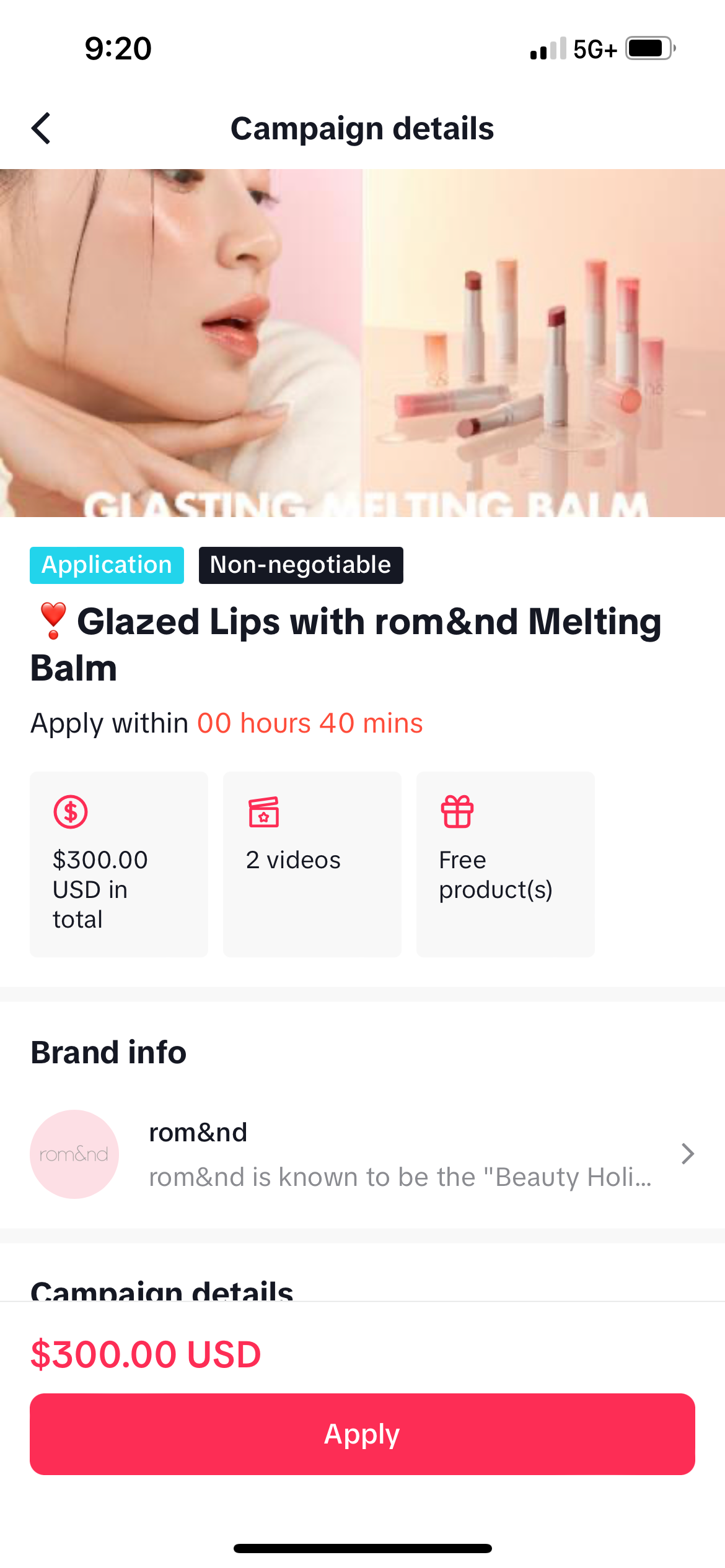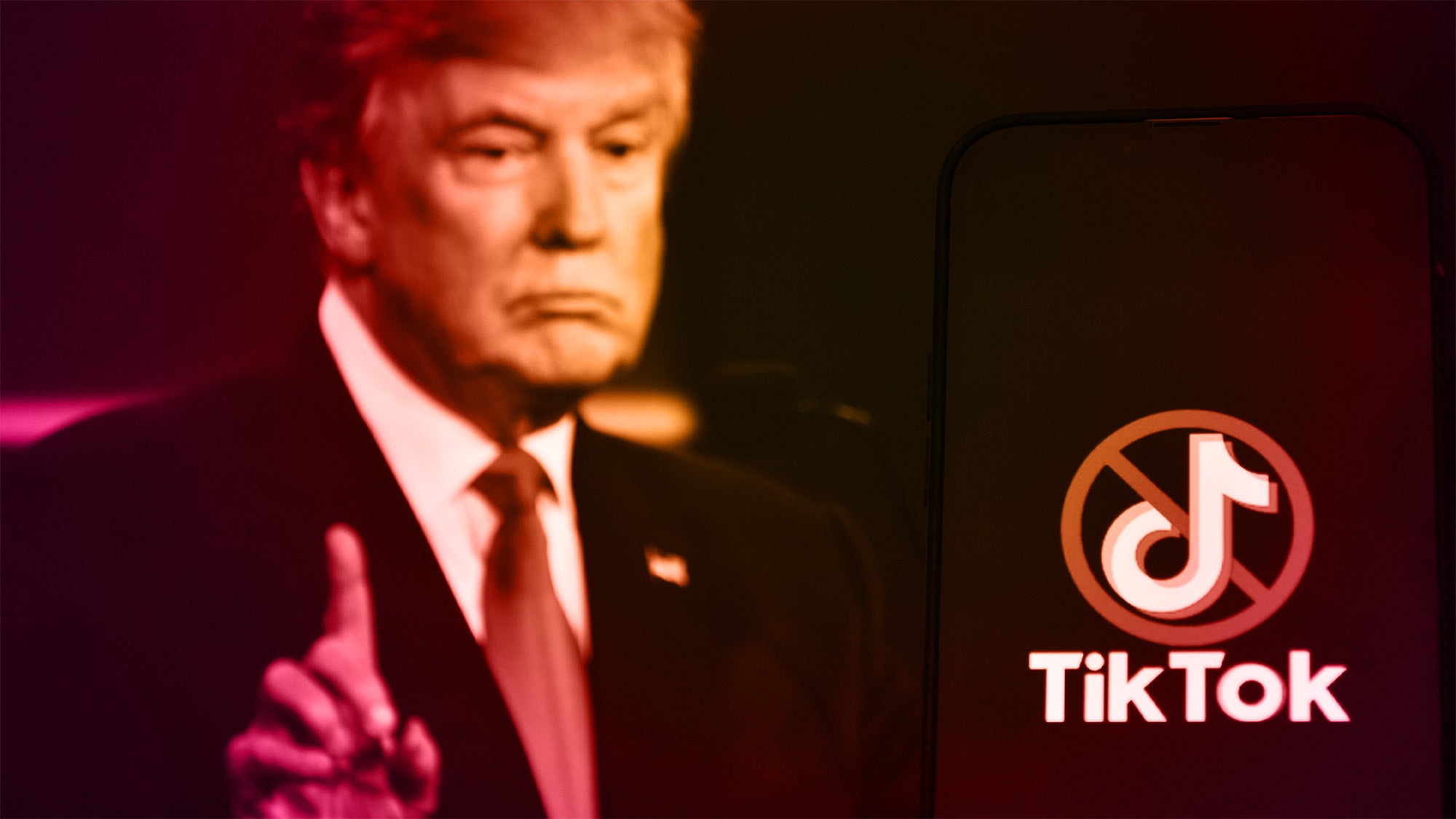
When I first started using TikTok in 2020, I had no intention of becoming a content creator. I was bored during the pandemic and loved making funny videos with trending audio. My goal wasn’t to learn how to monetize TikTok. I just loved creating.
As I spent more time there, I found myself talking to the camera more. I started sharing my own story, posting a few new videos a week. I leaned into a specific niche tied to my wedding business and began gaining a few thousand new followers a month. After a year of posting regularly, I had over 50,000 followers. Now was the time to monetize my content.
At the time, there weren’t many opportunities to make money directly through the app, so figuring out TikTok monetization was a little trickier. The platform had just launched its Creator Fund program. However, I heard other creators share that they weren’t making much through it. I never gave it a try.
One of my biggest goals in 2024 is to make more money from my content through monetizing my TikTok. Aside from sporadic earnings made through affiliate links and occasional brand deals, I wanted to incorporate other streams of income.
I recently realized that there are a handful of ways a creator can make money directly through TikTok. As a creator with 50,000 followers on TikTok, here are the four monetization opportunities currently available to me.
How To Monetize TikTok As You Grow Your Following
Remember that monetizing your social media content is a marathon, not a sprint. As you gain followers new opportunities will present themselves to you. Just because you have a small following right now doesn’t mean you can’t earn money. Here are three methods for monetizing TikTok based on follower amount:
Monetize TikTok At 1,000 Followers
TikTok Shop for Creators

Monetizing TikTok can start earlier than you may realize. Currently, I earn a few hundred dollars a month from affiliate links. I share these links in my newsletters and when promoting products on Instagram stories. In 2023, TikTok launched TikTok Shop, a way for creators to earn affiliate income directly through the platform.
To be eligible for the TikTok shop, you need 1,000 followers and to have posted a video on TikTok in the last 28 days.
Once accepted into this specific TikTok monetization program, you can scroll through TikTok Shop and find different products to promote. Each product states how much affiliate income you can earn when you promote it.
If you already own a product that’s in the TikTok shop, create a video showing that product. Then link to the product with your video.
When the video goes live, you will earn affiliate revenue if people purchase it through the platform from your link. This is the simplest way to monetize TikTok.
If there’s a product you think your audience would love, you can request a free sample from the brand. If the brand sends you a sample, make sure you create a video. This can help you build a relationship with the brand as you earn affiliate revenue.
I tested this process by asking six brands for free samples and posting videos about them. In February, I generated 14,900 views across the six videos.
However, I only sold one item. Currently, the amount of affiliate revenue I’ll make is pending until it passed the return period. However, it should come out to $11.25, based on what the brand offered on their listing.
How To Monetize TikTok At 10,000 Followers
Creativity Program Beta

TikTok revamped and relaunched a creator’s program in 2023, which is now called the Creativity Program Beta. The program is designed to help creators monetize TikTok content. The TikTok monetization requirements for this function are geared more toward mid-level content creators. To be a part of it, a creator has to have at least 10,000 followers and 100,000 video views within the last 30 days.
Once accepted, videos that are one minute long and reach 1,000 views are eligible for monetization. I’m not a creator who frequently posts long-form content. Most of my videos are 15-30 seconds long, but I decided to try this out and post a few videos that were over one minute long.
After 30 days, I only earned $26 from three eligible videos. While these earnings are low and almost don’t seem worthwhile, I do think that if a video went viral, the earnings would pick up quite a bit.
It’s a worthwhile program to be in because it doesn’t require creators to bend their content to fit certain requirements that other monetization programs. Instead, if a video is over a minute long, it’s automatically entered into eligibility for monetization. It’s a low-lift, large-potential method of monetizing TikTok.
Creator Marketplace

It can be time-consuming to source brand deals as a creator. I spend two or three hours a week reaching out to brands, sharing my media kit, and pitching partnership ideas. That said, TikTok has a Creator Marketplace that connects you directly to brands. To be eligible for it, you need to have 10,000 followers and three posts within the last 30 days.
There are two primary ways to find brand partnership opportunities. First, brands can contact you directly by sending invitations to campaigns or a direct message.
I noticed a dating app reached out inviting me to work on a campaign. They shared details about their brand and asked me to create one video for them that would live on my TikTok account for at least 30 days.
They didn’t specify payment terms for this deal, instead asking me to contact them to negotiate a rate.
I started to browse the marketplace, which lets creators scroll through opportunities that are available for anyone to apply to. A makeup brand offered $300 for a creator to make two videos about their products.
The company said the rate is non-negotiable and shared a link for creators to apply.
In the application, you can share why you are a good fit to work with the brand, ideas you have for the videos, and examples of previous videos you have made for brands that were done in a similar tone. I decided to apply for this brand campaign but have not heard back yet.
While there were many opportunities in the creator marketplace, the rates offered seemed low.
Usually, I charge a brand around $500 for a video, but there weren’t many opportunities for that amount. That’s why I don’t think I’ll be spending much time exploring opportunities inside the marketplace. But luckily, monetizing TikTok doesn’t stop there.
How To Monetize TikTok At 50,000 Followers
Work With Artists Program
Since a big part of creating content on TikTok is the music you pick for each Since a big part of creating content on TikTok is the music you pick for each video, TikTok launched a creator tool in 2023 called Work with Artists. This TikTok monetization opportunity is offered to people who have over 50,000 followers.
Once inside the dashboard, you can scroll through opportunities from artists who are offering creators money to post content using their new songs.
Every opportunity has specific guidelines that a creator needs to follow to be eligible to earn money. Those guidelines include the maximum amount of money a creator can make and how much more money a creator can earn based on the number of views and video requirements.
For example, I clicked on a new opportunity posted for a song called Side Effects by Ellie Lennon. The maximum amount a TikTok creator can make is $500 from this campaign.
If the video gets 8,000 views, the creator will earn $20, 15,000 views, and the creator earns $30. The amount of money per view goes up from there until it caps at $500.
To be eligible, a creator has to follow the video requirements, which in this case includes incorporating a TikTok filter onto the video and answering a question about your own dating style.
Once you create the video and submit it, you can start earning money. Tapping into these offerings requires around 20-30 minutes of time (for strategy and video creation). I decided to save this for a day when I don’t have a lot going on and see if any of the videos earn a decent amount of money. Learning how to monetize your TikTok effectively isn’t an easy process. But by maintaining consistent output and keeping your promises to brands, you can develop real income over time. Just remember, the content comes first. People can tell when you’re just creating to sell things.
The Hidden Costs of Being a TikTok Creator
Monetizing TikTok isn’t just about posting videos; there are hidden costs associated with content creation. Quality equipment like ring lights, tripods, and high-resolution cameras can quickly add up. Many creators also invest in editing software or tools to enhance their videos, as well as trendy props, outfits, or settings that align with their aesthetic. Time is another significant expense—brainstorming ideas, filming, editing, and engaging with followers often requires hours each day.
Additionally, the mental toll of staying creative and consistent in the face of fluctuating engagement can be challenging. Creators should factor these costs into their monetization goals and seek sustainable strategies to balance expenses with income.
Leveraging TikTok Analytics to Boost Earnings
TikTok’s built-in analytics tools are invaluable for creators aiming to maximize their income. By analyzing metrics like audience demographics, video performance, and peak engagement times, creators can refine their content strategies. For instance, identifying which types of videos generate the most views or conversions can help creators focus on similar themes.
TikTok analytics also highlight follower growth trends, which can be useful for pitching to brands or qualifying for monetization programs. Creators should regularly review their analytics dashboard to spot patterns, track campaign performance, and make data-driven decisions that enhance their earnings potential.
Transitioning from TikTok to Other Revenue Streams
While TikTok offers lucrative monetization opportunities, relying solely on the platform can be risky. Diversifying income streams helps creators build long-term stability. Many TikTok creators expand their brands by launching merchandise, offering online courses, or monetizing other social media platforms like YouTube or Instagram.
For example, a fitness creator could sell workout plans, while a lifestyle influencer might launch a line of branded home goods. Additionally, creators can leverage their TikTok audience to grow email lists or Patreon communities, ensuring a direct line of communication with fans. By branching out, creators reduce their reliance on TikTok’s algorithm and open doors to new revenue opportunities.




